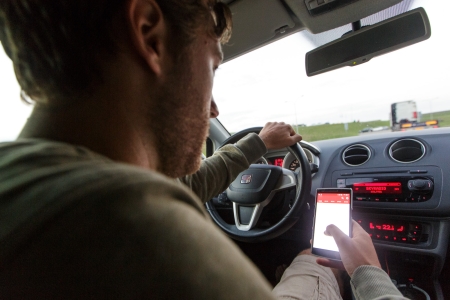Distraction may be seen as ‘misguided’ attention or attention paid to ‘the wrong things’. Since our mental capacity is limited, we can only pay attention to part of our environment. A road user should first and foremost be focused on traffic. After all, a traffic situation may become life-threatening in a matter of seconds. Road users may get distracted when their attention is drawn to (striking) matters and events that have little or nothing to do with the traffic task at hand and that are unexpected, e.g. a low-flying plane. They may also be distracted when combining a traffic task and a task of a different order which also needs attention, e.g. reading a text message. In addition, distraction may also be caused by traffic-related tasks, such as operating the navigation system while driving or trying out ways to operate the windscreen wipers. Secondary activities and (non)traffic-related matters and activities may be so demanding that the road user’s attention to the traffic task at hand is insufficient. Consequently, (driving) performance deteriorates and crashes may occur.
There are several types of distraction [1]:
- visual distraction, e.g. when road users have their eyes on their smartphone screen instead of on the road;
- auditory distraction, e.g. when a cyclist listens to music through a headphone or earphones, which diverts attention from traffic;
- physical (biomechanical) distraction, e.g. when a road user enters a phone number manually or types a text message;
- cognitive distraction, e.g. when a road user is daydreaming or concentrating on a conversation with a passenger and not on traffic.
Often, different types of distraction occur simultaneously. For example texting while driving involves visual, physical and cognitive distraction. Searching for a different playlist may even involve four simultaneous types of distraction.
Some sources of distraction may, in addition to the different adverse effects, also have positive effects on the traffic task. Music, for example, may relieve stress and aggression and a telephone conversation may help truck drivers stay awake and alert in monotonous traffic circumstances [2] [3].
